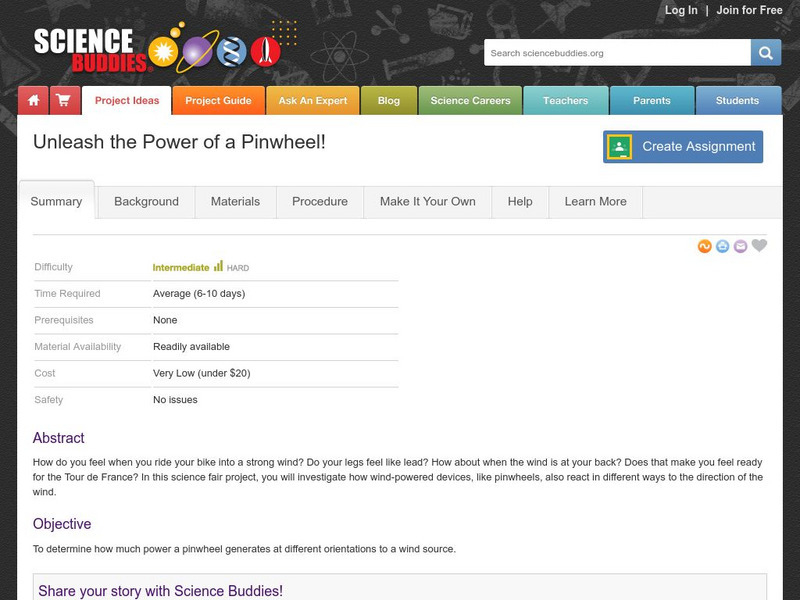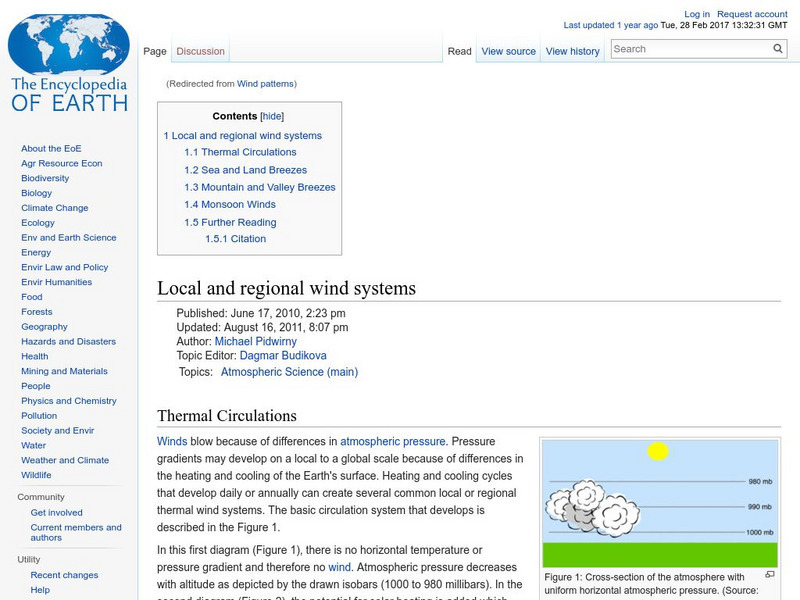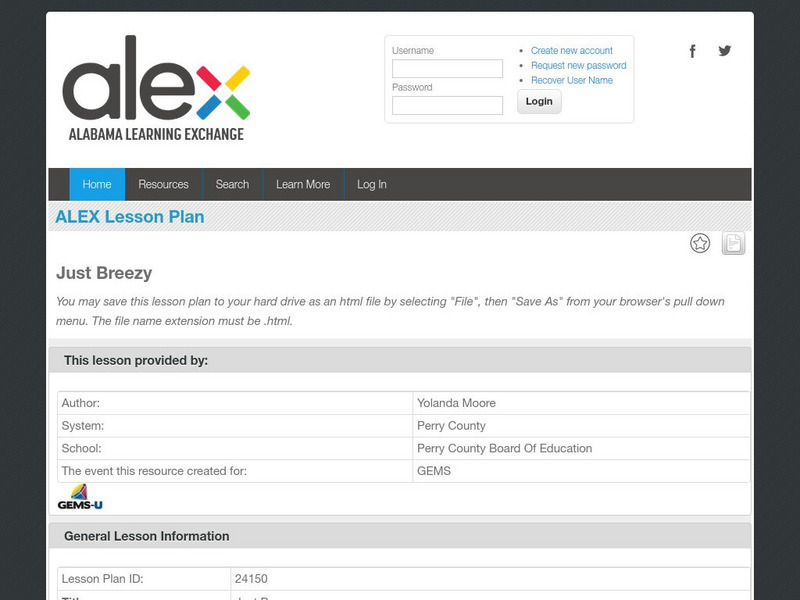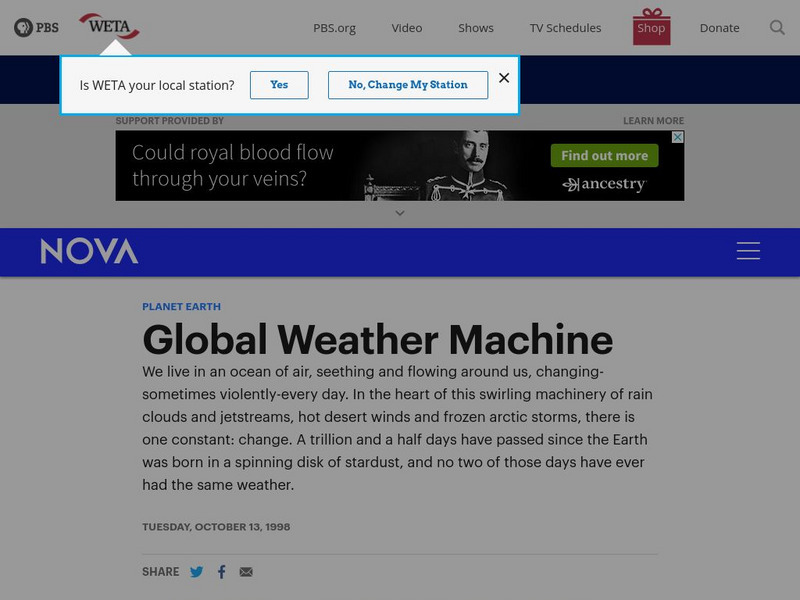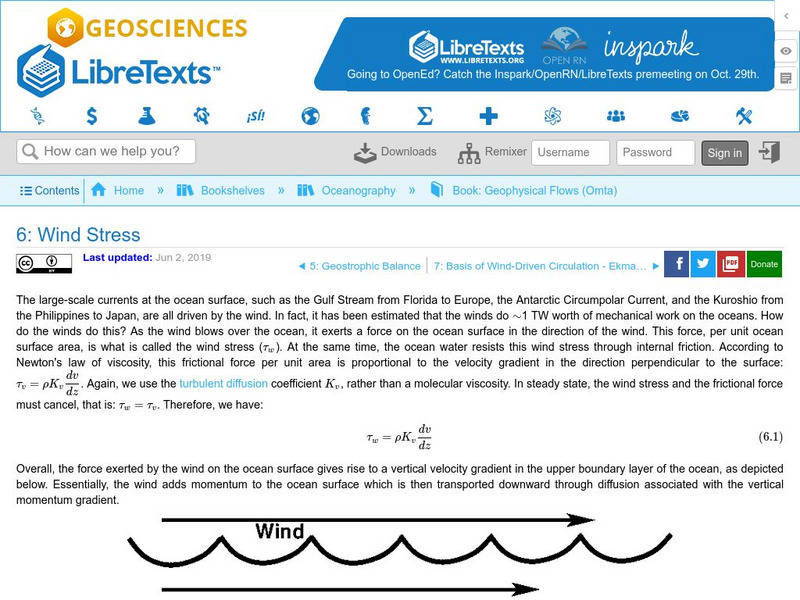Science Buddies
Science Buddies: Unleash the Power of a Pinwheel!
In this science fair project, you will learn more about wind-powered devices, like pinwheels. Much like pinwheels, we react in different ways to the direction of the wind when we ride bikes, or even try to walk.
TeachEngineering
Teach Engineering: Wild Wind
Students will learn the difference between global, prevailing and local winds. In this activity, students will make a wind vane out of paper, a straw and a soda bottle and use it to measure wind direction over time. Finally, they will...
Better Lesson
Better Lesson: What Is Wind?
The purpose of the lesson is to introduce young scholars to what causes wind and how it can be measured. Students will create a wind gauge and collect data on "wind speed". Detailed instructions are included as well as examples of the...
Better Lesson
Better Lesson: Where'd the Wind Come From?
Kids learn the science behind wind by watching a video, hearing a book and using a flow chart. This lesson plan includes pictures of students' completed work, extension ideas, and a printable flow chart worksheet.
Utah Education Network
Uen: Trb 4:2 Investigation 3 Wind
Learn how to measure the direction and speed of wind.
Encyclopedia of Earth
Encyclopedia of Earth: Local and Regional Wind Systems
Read about regional and local wind systems, including information on changes in atmospheric pressure, thermal energy in the atmosphere, sea and land breezes, mountain and valley breezes, and monsoon winds.
Alabama Learning Exchange
Alex: Just Breezy
For this lesson, students will learn about sea breezes and land breezes. They will complete demonstrations and work in groups as they investigate how air is affected by the surfaces below it. This lesson plan was created as a result of...
NOAA
Noaa: Southern Region Weather: Global Circulations
"Global Circulations explain how air and storm systems travel over the Earth's surface. The global circulation would be simple (and the weather boring) if the Earth did not rotate, the rotation was not tilted relative to the sun, and had...
TeachEngineering
Teach Engineering: Wind Energy
Students learn about wind energy by making a pinwheel to model a wind turbine. Just like engineers, they decide where and how their turbine works best by testing it in different areas of the playground.
CK-12 Foundation
Ck 12: Earth Science: Local Winds
[Free Registration/Login may be required to access all resource tools.] Descriptions of various types of local wind patterns.
CK-12 Foundation
Ck 12: Earth Science: Local Winds
[Free Registration/Login may be required to access all resource tools.] Describes how local winds are formed.
PBS
Pbs/global Weather Machine
This site explains wind systems as part of a global weather scheme, with illustrations.
American Geosciences Institute
American Geosciences Institute: Wind Classroom Activities
When air is warmed, it expands and becomes less dense. As the air becomes less dense, its air pressure decreases. This occurs because molecules in warm air have greater kinetic energy (energy of motion) than in cold air. As the molecules...
Libre Text
Libre Text: Wind Stress
The force exerted by the wind on the ocean surface gives rise to a vertical velocity gradient in the upper boundary layer of the ocean. Essentially, the wind adds momentum to the ocean surface which is then transported downward through...
NASA
Nasa: Global Wind Patterns
This site from NASA lists and defines global wind patterns. It features a graphic of these patterns and a self-test with answers.
PBS
Pbs Learning Media: A Look at Weather Factors: Interactive Lesson
Students learn about four factors that describe different types of weather -- temperature, wind, precipitation, and sunlight and clouds -- as they explore various weather conditions and find evidence that describes each type of weather...
Wolfram Research
Wolfram Science World: Hadley Circulation
The creation of wind systems by Hadley cells is explained at this site.
University of Colorado
University of Colorado: Basic Wind Structure
Brief explanations of basic wind structures and terms like: geostropic winds, boundary layer, shear stress, modes of snow transport, and more.
Weather Wiz Kids
Weather Wiz Kids: Wind
Wind is air in motion. It is produced by the uneven heating of the earth's surface by the sun. Since the earth's surface is made of various land and water formations, it absorbs the sun's radiation unevenly. Two factors are necessary to...
Education.com
Education.com: Learn Where Wind Comes From
[Free Registration/Login Required] Directions for a simple activity that will help students understand where wind comes from.
Other
Wind Map
An invisible, ancient source of energy surrounds us-energy that powered the first explorations of the world, and that may be a key to the future. This map shows you the delicate tracery of wind flowing over the US.
Center of Science and Industry
Cosi Columbus: Paper Cup Anemometer
Make your own anemometer like meteorologists use to measure the speed of wind. Includes full list of materials, procedures, and scientific explanation of what makes wind.


